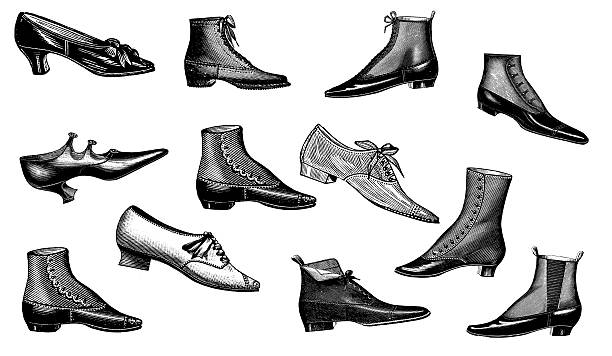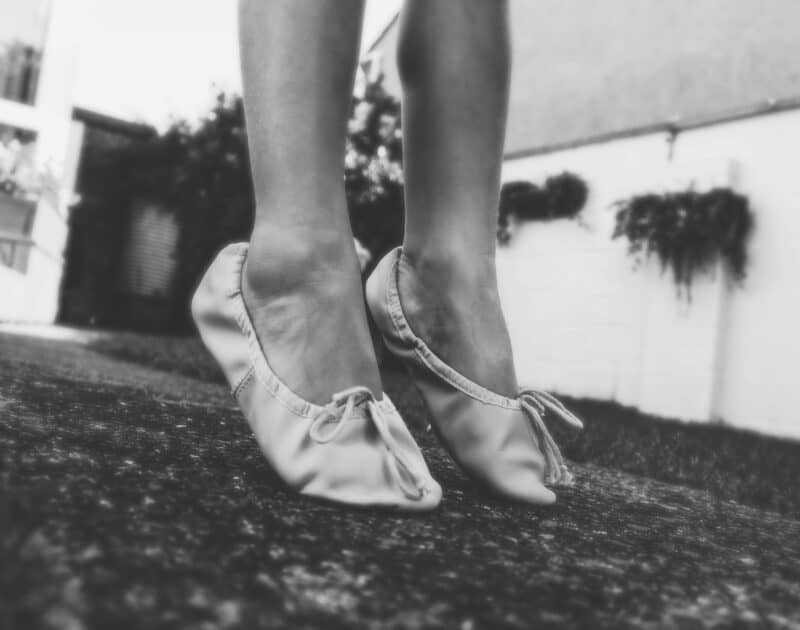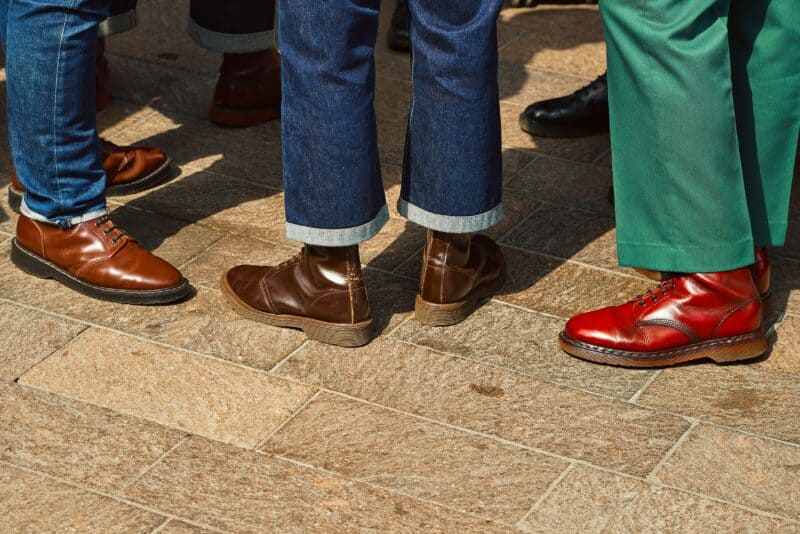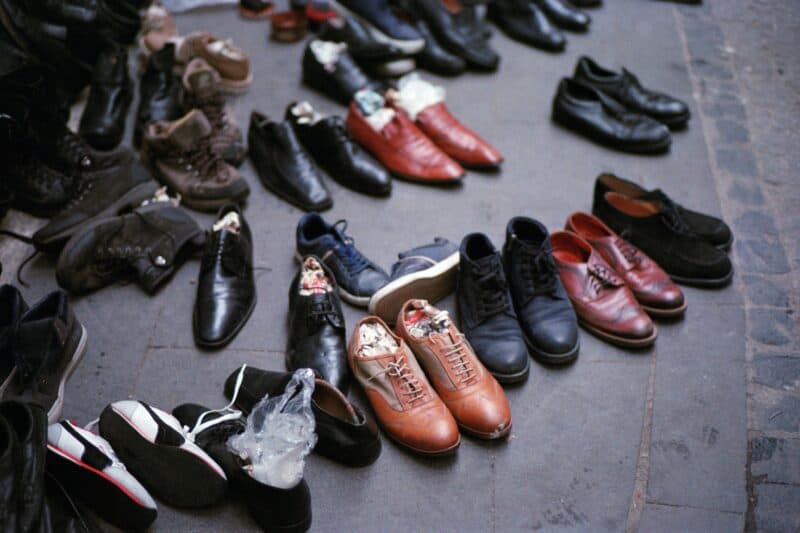The magic of 50s fashion shoes is that they are perfectly practical and stylish. In the 1950s, every outfit was complete with shoes – from the house dress to the poodle skirt to the pencil skirt. The postwar decade was all about optimism and elegance, and footwear reflected this spirit. From fun flats for teenagers to sexy stilettos for ladies, 1950s shoes were colorful, creative, and designed for movement, grace, and fun.

Key Points:
- The 1950s were a golden age for stylish, practical shoes – Postwar optimism brought bold designs, new materials, and a shift toward self-expression through footwear for both women and men.
- Women’s shoes balanced elegance and comfort – From glamorous stilettos and kitten heels to casual ballet flats and saddle shoes, 50s footwear matched every occasion and outfit.
- Men’s shoes became more polished and stylish – Oxfords, loafers, and two-tone shoes reflected a clean, confident look, while slip-ons and boots added a relaxed, youthful vibe.
- 50s shoe style still inspires fashion today – Modern versions of loafers, slingbacks, and flats offer a timeless touch of vintage charm, proving that classic design never goes out of style.
The Rise of 50s Fashion Shoes
The 1950s were a turning point in shoe design. After the wartime deprivations of years and all in plain utilitarian shoes, fashion was back in vogue in color, curves, and personality. Designers started playing with different materials, shapes, and heights. Fifties fashion shoes became a means of expressing individuality and confidence for both women and men.
Women had more choices than ever before. The stiletto heel was introduced, flats became fashionable, and even casual shoes had overtones, bows, buckles, and embellishments. For men, shiny loafers, two-tone Oxfords, and sleek leather shoes became a necessity for having a polished everyday look. Every step – in a diner, a dance hall, or an office – was stylish.
Women’s 50s Fashion Shoes
Kitten Heels – Fashion in Every Step
Kitten heels – tiny and slim-looking heels- became a big craze. Standing between one and two inches tall, they were elegant yet practical, and women loved them for their ladylike charm as well as their comfort. Kitten heels combined perfectly with pencil skirts, party dresses, and tailored suits, creating a neat and classy appearance.
Stilettos: The Glamour Heel
With the introduction of the stiletto heel in the 50s, female fashion would never be the same again. Stilettos were known for their sleek design and slim metal heels – a true symbol of grace and style. They highlighted the arch of the foot, as well as improved posture. Evening shoes were generally in a satin, metallic leather, or bright patent finish that reflected the decade’s love of color and glamor.
Ballet Flats: Comfort Versus Style
Not every 1950s woman wore heels – they were replaced by ballet flats, the darlings of casual and youthful fashion. Inspired by ballerinas, these shoes were soft, flexible, comfortable, and satisfying. They were paired with pretty dresses, cigarette pants, pedal pushers, and circle skirts. Available in soft pastels or glossy patent leather, ballet flats added an element of casual sophistication to every woman’s wardrobe.

Saddle Shoes – The Teen Favorite
Saddle shoes were one of the limitations of the 50’s fashion staples. With their two-tone design (usually black and white), these lace-up shoes became a symbol of teenage style. Paired with bobby socks and poodle skirts, they were a must-have for school dances and afternoon dates. Colorful, chic, and playful, they were the perfect expression of 1950s youth fashion.
Loafers & Moccasins – Effortless & Everyday Glamor
For women seeking a more casual look, loafers and moccasins offered comfort without sacrificing class. These slip-on flats were made of smooth leather or suede and were often available in tan, navy, or cherry red. Whether worn for errands or leisurely lunches, they were the perfect choice – the proof that elegance did not have to be hard work.
Peep-Toe and Slingback Shoes
Peep-toe pumps and slingback heels were evening favourites. They added femininity and flair without too much of the formal and heavy. Open toes gave women the opportunity to display some bright nail polish – another fun trend of the decade.
Men’s 50’s Fashion Shoes
In the 1950s, men’s footwear began to shift away from pure practicality toward a sleek, polished look. Leather shoes came to symbolize respectability, and casual shoes denoted the carefree, fun-loving spirit of postwar America.

Oxford Shoes
Oxfords were typically brown or black and made from leather and worn for work and formal occasions. Their immaculate shine and polish were a sign of professionalism and pride.
Loafers
Penny loafers became the most versatile shoes for men in the 50s. The design of penny loafers became the most versatile in the 1950s. College students and businessmen could wear them comfortably for hours as they were soft, stylish, and easy to slip on. Some even put in a penny for good luck – hence the loafers.
Two-Tone Shoes
Two-tone wingtips or brogues in black and white or brown and tan were weekend favourites. Often paired with smart suits, they were ideal for dancing. These shoes reflected the lazy and carefree nature of the decade.
Casual Slip-Ons and Boots
Suede desert boots, loafers, and simple slip-ons were all popular options for casual wear. They complemented the new rock ‘n’ roll style and were particularly popular among young men who admired such stars as Elvis Presley and James Dean.
Colors and Materials That Defined 50s Fashion Shoes
The 1950s embraced innovation. Thanks to new materials such as nylon, vinyl, and synthetic leather, shoes became more affordable and fashionable. Soft pastel pinks and baby blues appeared with bright reds, silvers, and even golds. Glossy patent leather became particularly popular for evening shoes, and soft suede dominated casual styles.
For many, fashion shoes around 50 were more an expression of personality than they were practical. Women matched their shoes to handbags, hats, and gloves, whereas men kept their pair polished to perfection. Texture and color were selected to convey optimism, energy, and elegance.
The Cultural Impact of Sneakers in the 1950s
Shoes in the 50s were more than accessories—they were a statement. Teens rocked the block in saddle shoes, housewives wore kitten heels with aprons, and businessmen buffed their Oxfords as a sign of their status. Shoes had become a part of the fashion vernacular; television and motion pictures had brought them into the limelight. On-screen characters had a direct impact on real-life styles, whilst advertisements encouraged shoppers to own multiple pairs for every occasion.
How to Incorporate 1950s Shoe Style into Contemporary Life
Nowadays, recreating the vintage style of footwear is easy. Look for classic shapes and small details – bows, rounded toes, polished leather, or low heels. Pair ballet flats with cropped jeans or a skirt, or wear loafers with a tucked-in shirt for a preppy look. For a sleek look, opt for contemporary kitten heels or slingbacks in shiny finishes.
You don’t need to go all out vintage – even one pair of 1950s-inspired shoes can add a lovely, dapper touch to your modern wardrobe.
Conclusion

Timeless designs, soft curves, and assured flair have ensured the appeal of the 50s fashion shoes lives on today. Whether it’s the shine of stilettos, the comfort of loafers, or the charm of saddle shoes, all pairs contain a story of elegance and optimism. The decade proved that the right shoes didn’t just complete an outfit – they created an attitude. Even today, their legacy walks beside us – from one stylish step to the next.
